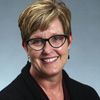Donating blood or blood plasma is commonplace, but a program at Seattle’s Fred Hutch collects donations of peripheral blood stem cells, vital to scientific research. At least 100 donors a year are needed, and organizers say they can be hard to find.
As a college student in Illinois, Robin Smith was a regular blood donor who considered it a civic duty to open her veins.
But she fell out of the habit, rushed by the demands of life and work, until November, when the 26-year-old research technician at Seattle’s Fred Hutchinson Cancer Research Center discovered a whole new way to donate.
Instead of offering a routine sample of blood or plasma to be used in transfusions, Smith signed up to provide peripheral blood stem cells, or PBSCs, the less-well-known cells that are in crucial demand for scientific research.
How to donate peripheral blood stem cells
•Donors must be between 18 and 70 and in good health.
•Donors must meet standard criteria for donating blood products.
•Payment ranges from $300 to $800.
• For more information, visit the program website, http://research.fhcrc.org/heimfeld/en/donor-program.html, email PBMC.DonorProgram@fredhutch.org, or call 206-667-5318.
Fred Hutchinson Cancer Research Center
“This is sort of a nice way for me to cumulatively do all of the effort of what would be several blood donations,” said Smith, who spent four hours on two weekdays with needles in both arms. “I actually work with PBSCs. I was very happy to do it.”
Most Read Local Stories
Smith earned $800 for her time and effort, enough to fly to Boston to see her family for Thanksgiving. It’s a far higher fee than the typical $40 to $60 paid for single donations of blood or plasma, but the ramifications of her contribution may have far more impact.
“The idea is that these cells contribute to research that’s helping develop treatments for patients,” said Dr. Shelly Heimfeld, a scientific director at Fred Hutch and Seattle Cancer Care Alliance (SCCA), where the donations are collected.
Blood stem cells, identified in the early 1960s, were the first type of stem cells discovered and launched a new era of research. Like other stem cells, they can copy themselves, differentiate into specialized cells and undergo cell death — functions that make them critical research tools for scientists.
Investigators studying diseases as diverse as cancer and sickle-cell anemia have relied on the Hutch cells, which have also been used in research for more than 50 papers published in leading journals in the past five years, Heimfeld added.
Heimfeld runs the 16-year-old program — funded through a grant from the National Institute of Diabetes and Digestive and Kidney Diseases — that collects PBSCs and provides them to dozens of researchers across the country.
The nonprofit Hutch program is one of the largest in the nation to collect and sell the cells. They’re also available from commercial producers, but at a much higher cost. A single vial of CD34-positive cells, a type of stem cell vital for research, could cost $2,500 from a commercial provider. Heimfeld’s program charges $500.
Bloodworks Northwest, the region’s blood bank, collects PBSCs, but only from donors providing stem cells for transplants for specific patients. They collect no cells for research, said Dave Larsen, Bloodworks’ spokesman.
Last year, about 100 local donors at Fred Hutch provided billions of cells to more than 100 outside investigators not only in the U.S. but in far-flung places such as Germany and Singapore, Heimfeld said.
“It doesn’t make money, but it does allow us to recover costs,” he added.
The PBSCs are collected through a process called leukapheresis, which removes blood through one arm, separates out white blood cells, and returns the blood to the donor.
To donate, Smith agreed to receive four days of shots containing granulocyte-colony stimulating factor, or GCSF, a protein that triggers the bone marrow to “mobilize,” or boost production of stem cells, which then can be retrieved from the blood.
Some people have reactions to the shots, which can cause joint aches and flu-like symptoms, but Smith said she felt fine.
“I’m always willing to help out,” she said. “Employees give back in other ways, but for me, my cells are much more renewable than my piggy bank.”
Donations that don’t require the shots (“non-mobilized”) are also accepted. Donors receive about $300 for those procedures, said Kristie Rollins, the project manager who oversees recruitment.
A single “mobilized” donation can yield 20 billion to 30 billion total cells, which contain about 100 million to 200 million stem cells, Heimfeld estimated. From those, scientists can request specific components, such as T cells and B cells, which play a key role in immunity. They might order a batch of 20 million or 40 million T cells, for instance, for use in an experiment.
Finding enough donors to supply the cells is a constant challenge, said Sharvari Joshi, who helps manage recruitment. For every successful donor, seven people have to be screened.
Donors must be between the ages of 18 and 70 and in good health, plus they must meet typical criteria for donating blood products. “Mobilized” donors can participate only three times in a lifetime, a cap put in place because there’s too little data about the effects of the GCSF shot. It appears safe, researchers said.
Ravi Prasad, 37, a Community Transit worker from Marysville, has donated PBSCs twice, both times on his birthday, after learning about the opportunity at a backyard barbecue. Although he did develop flu-like symptoms from the shots, he said he welcomed the chance to share his cells.
“The money was nice, but I didn’t do it for the money,” he said.
As an immigrant from Fiji, he said he felt an obligation to give back to the community that welcomed him.
“If my cells can contribute to even the smallest part of the betterment of humankind, I think I’ve done a lot,” he said. “More than most people will ever do.”
